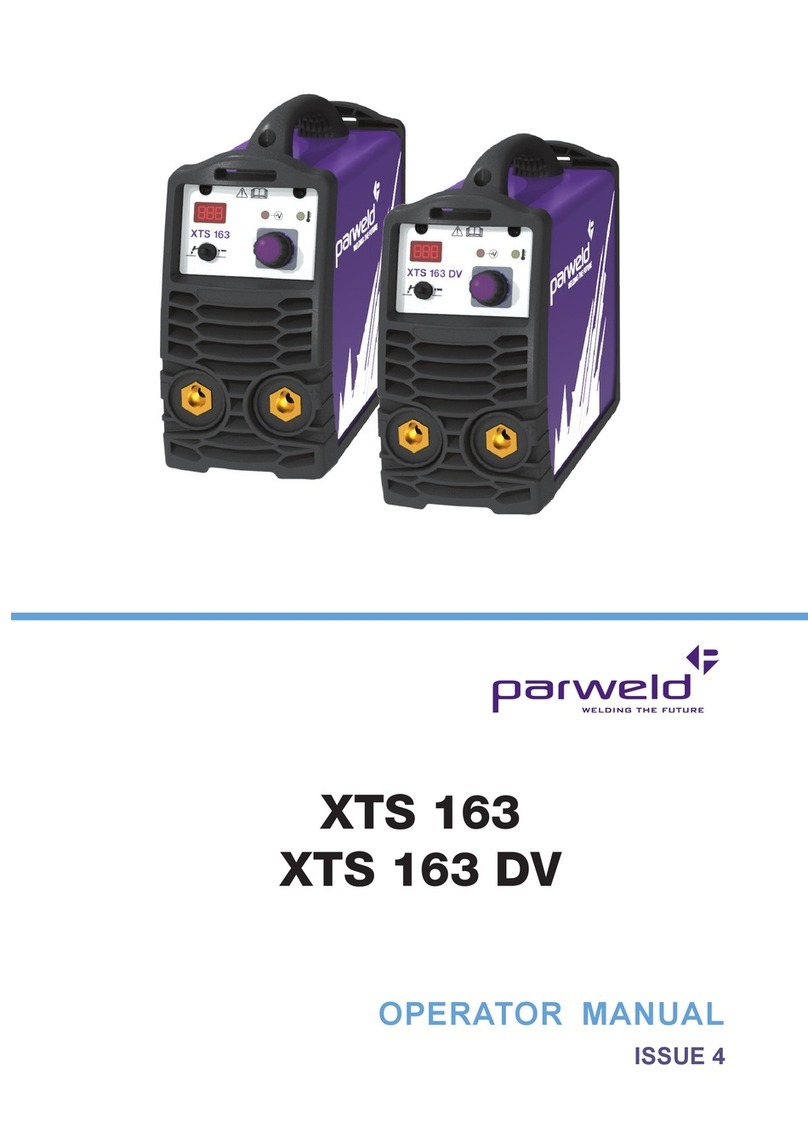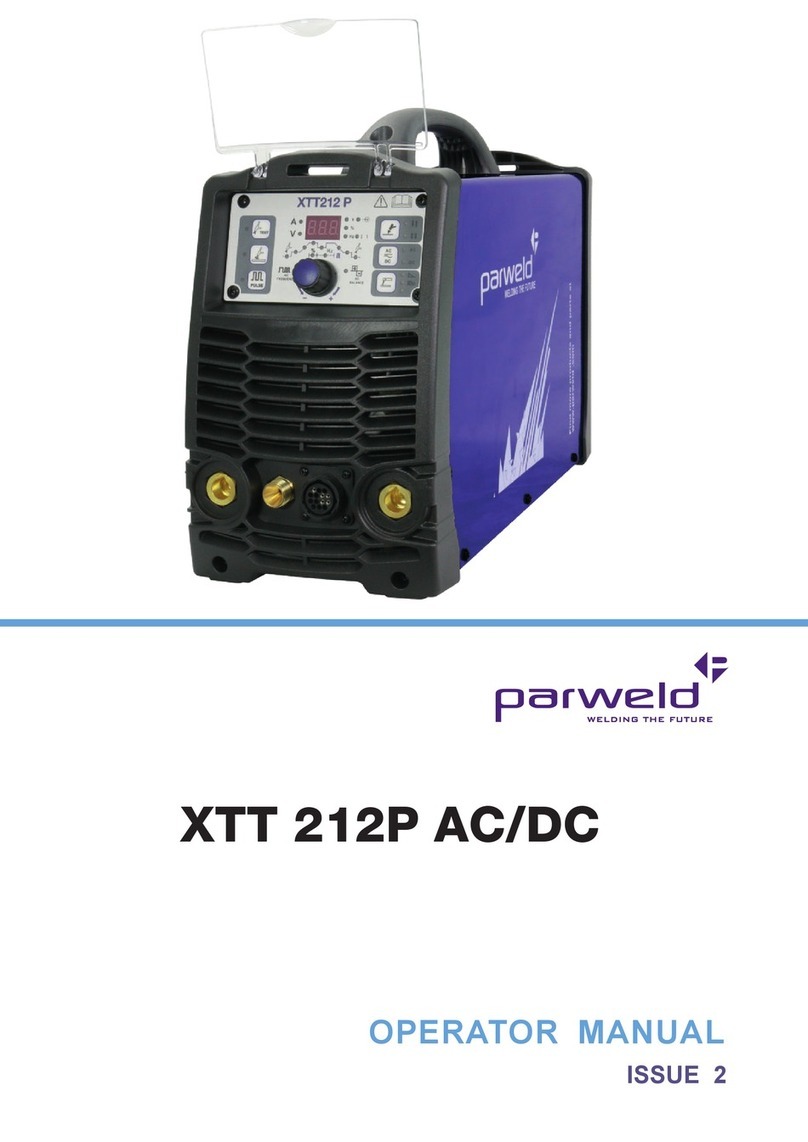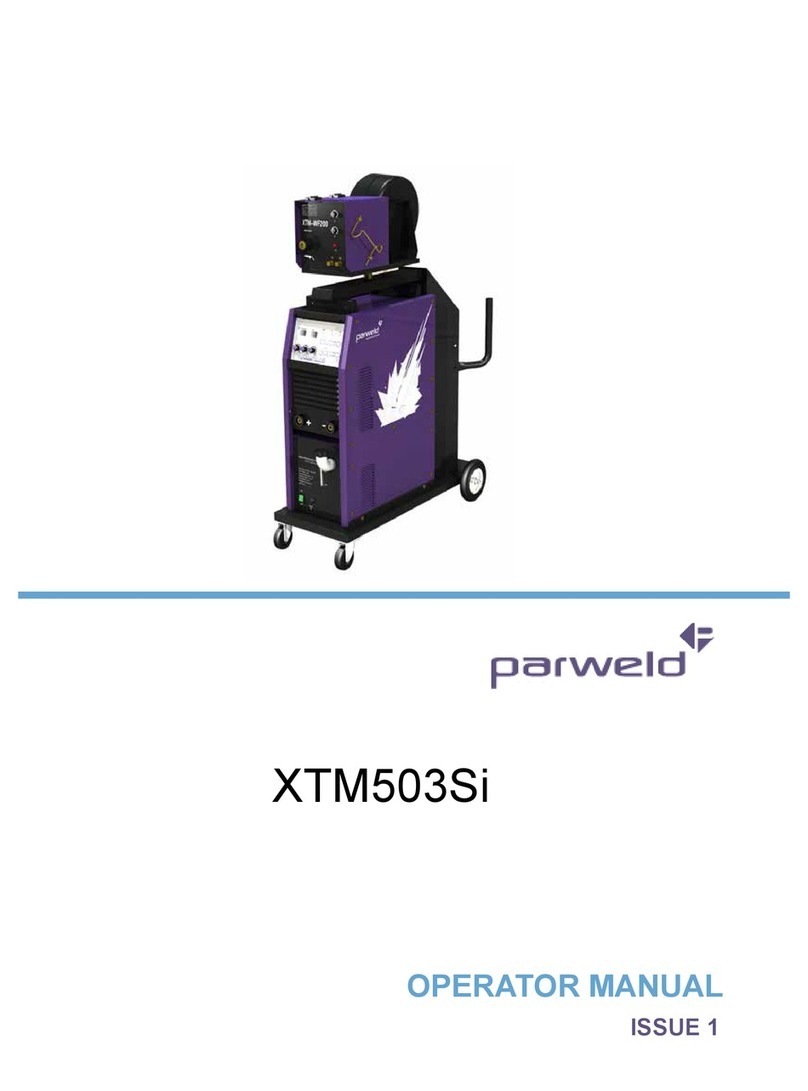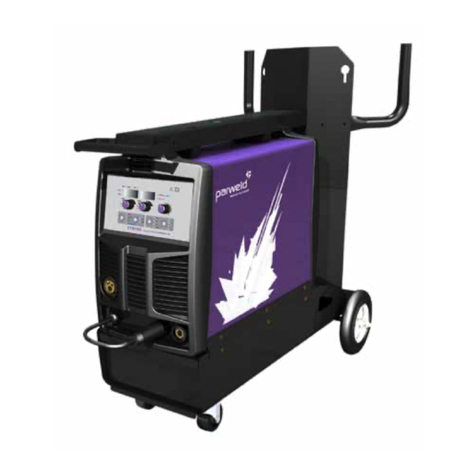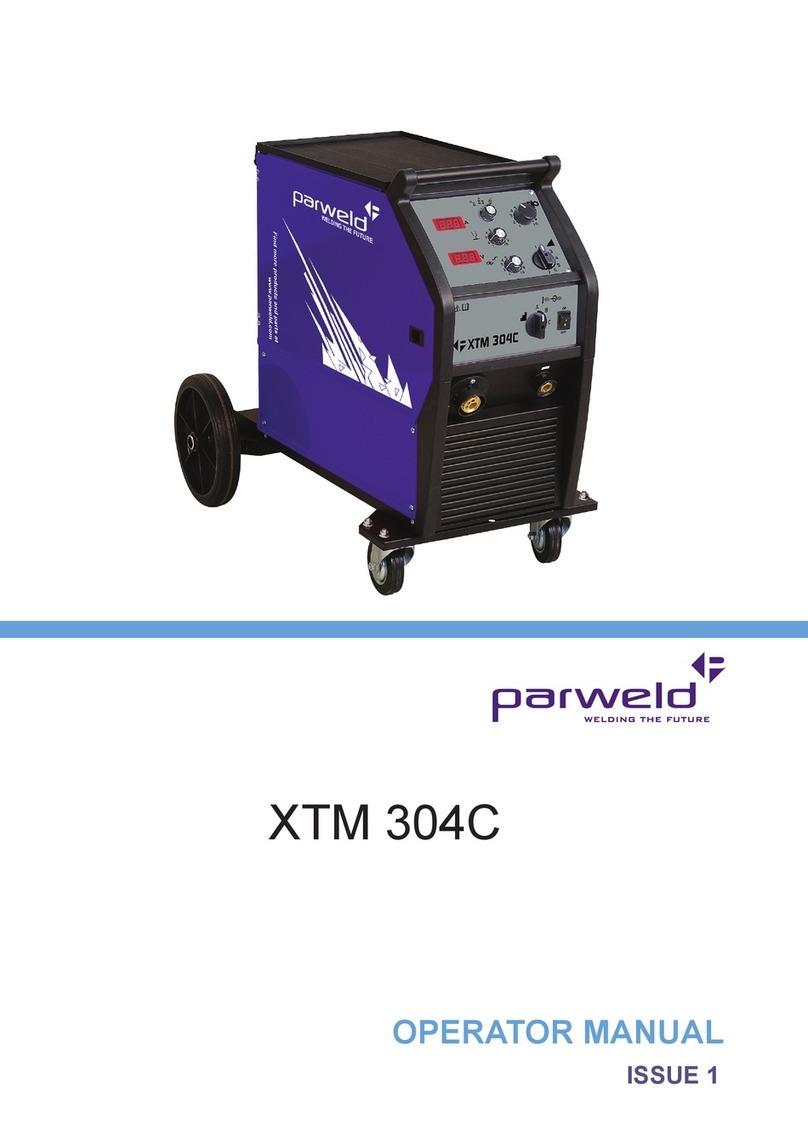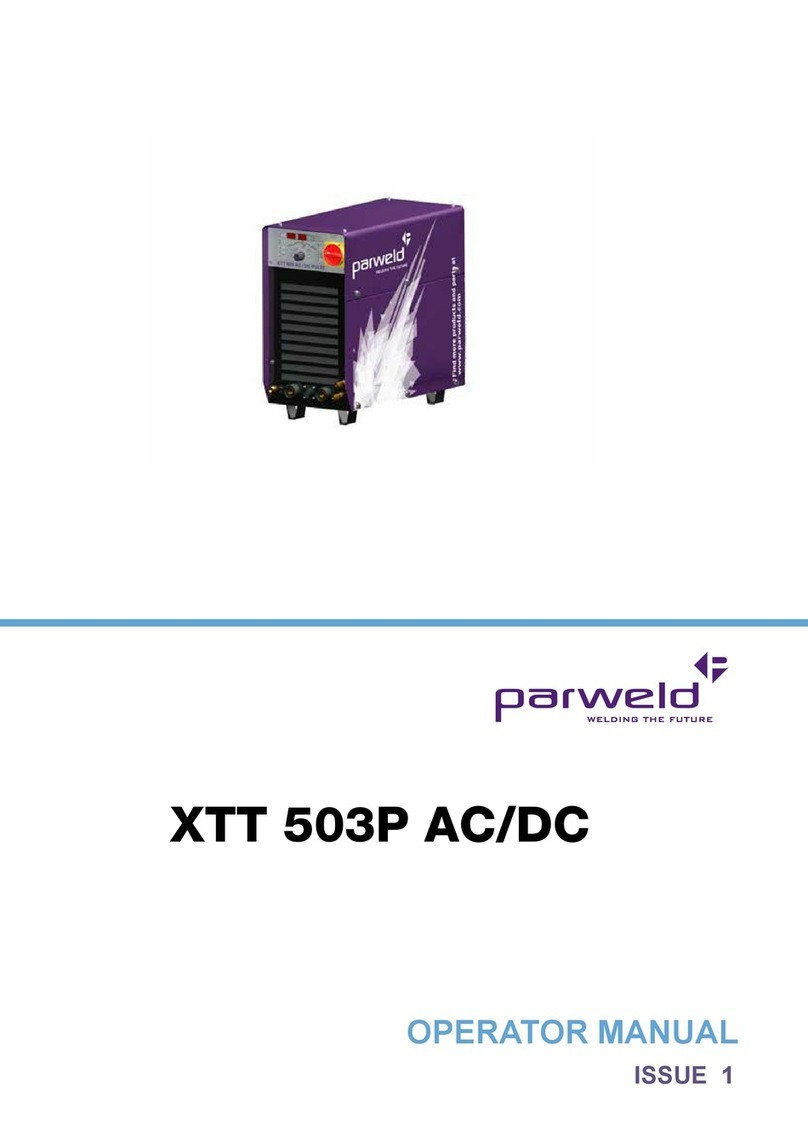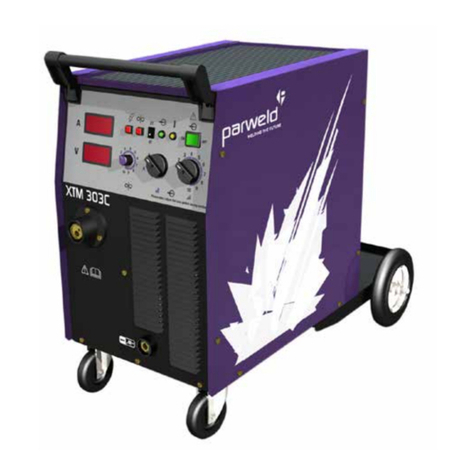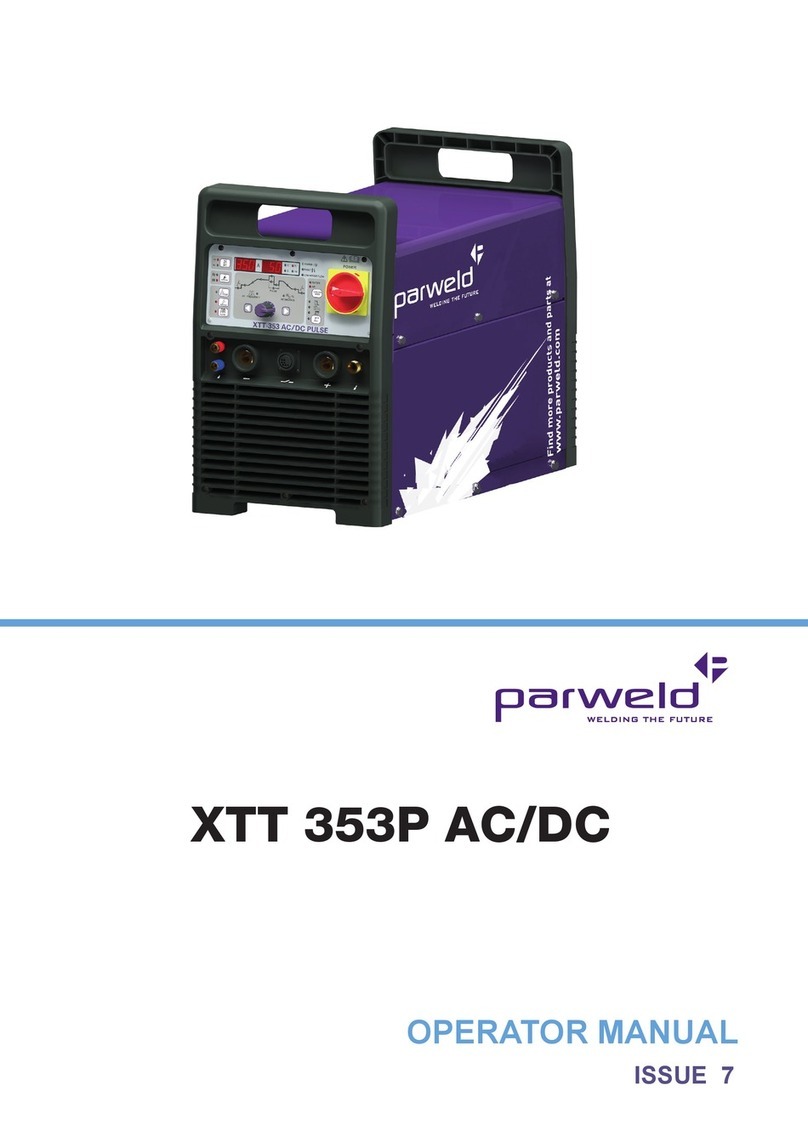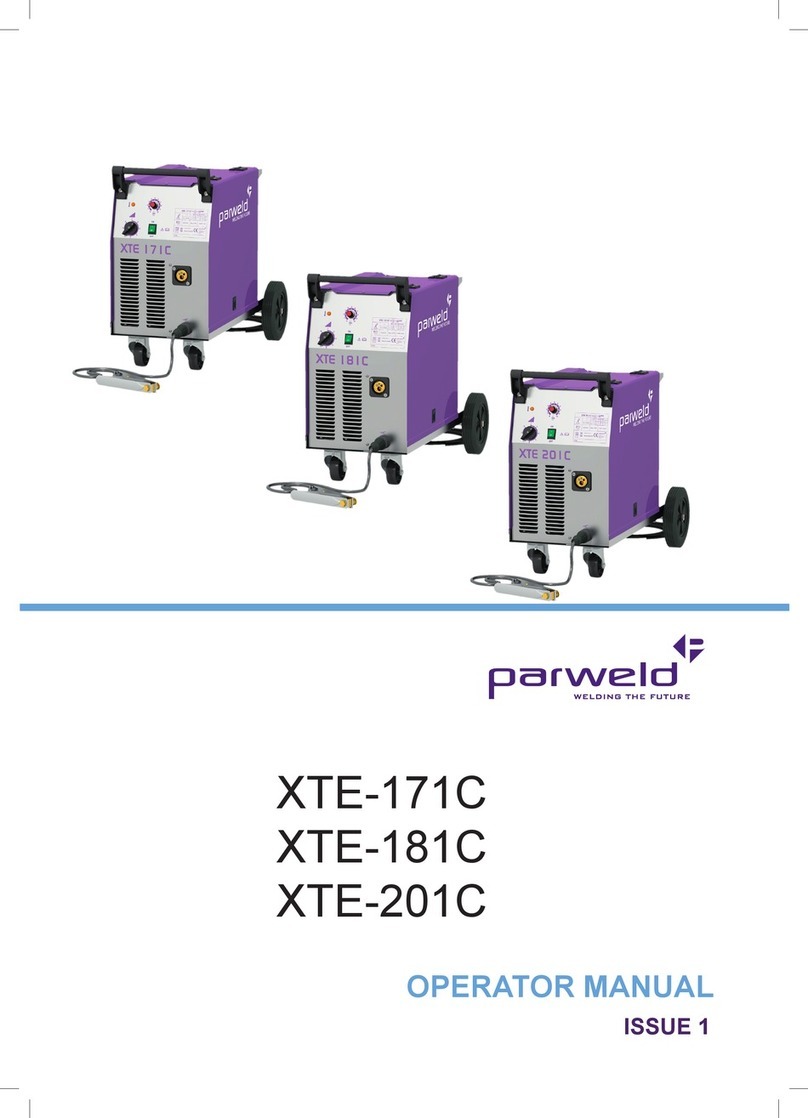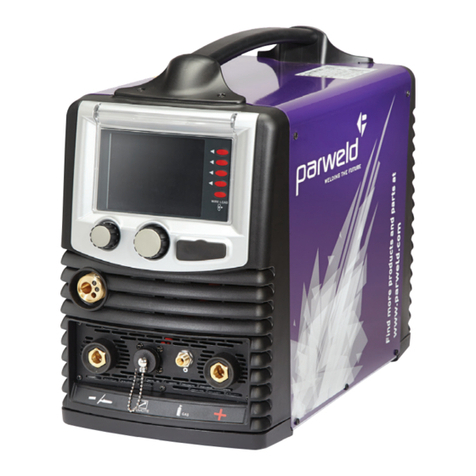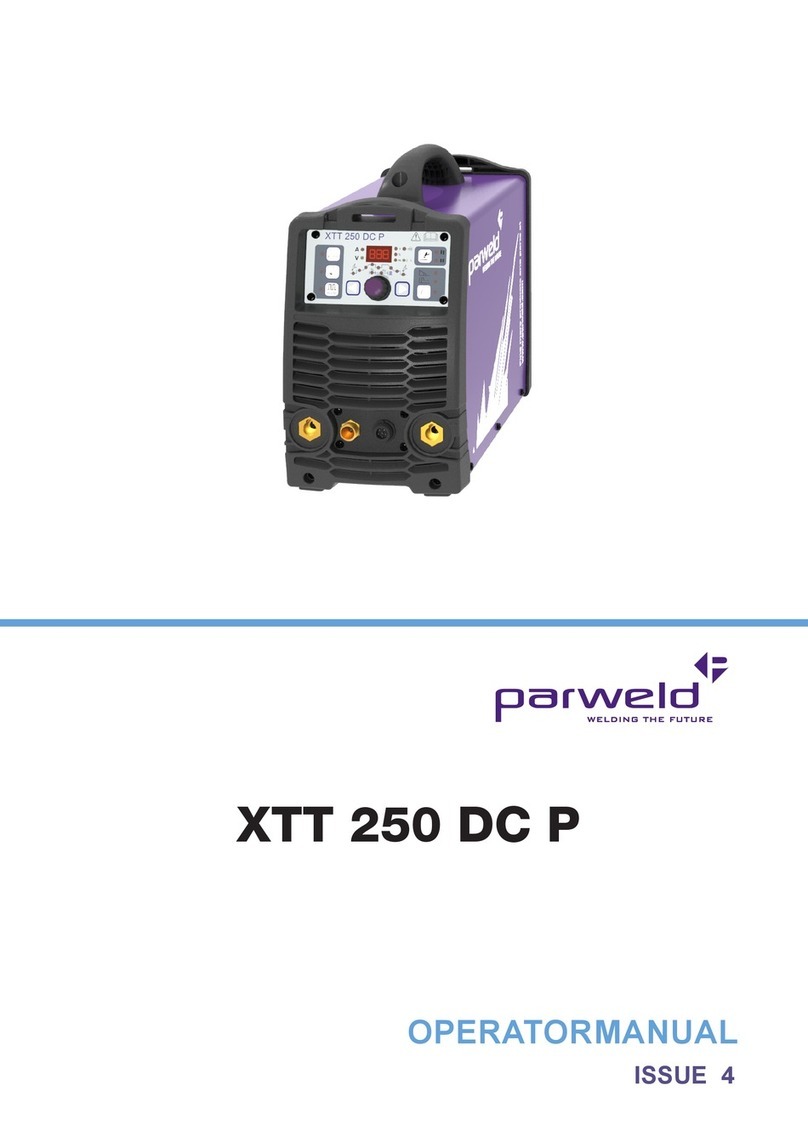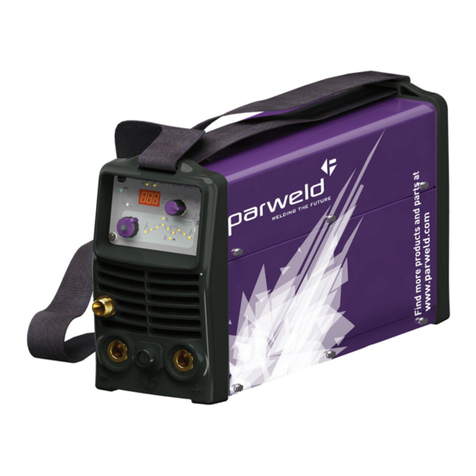5
resistant material (leather, heavy coon, or wool)
and foot protecon. Welding on closed containers,
such as tanks, drums, or pipes, can cause them to
blow up. Sparks can y o from the welding arc. The
ying sparks, hot work piece, and hot equipment can
cause res and burns. Accidental contact of electrode
to metal objects can cause sparks, explosion,
overheang, or re. Check and be sure the area is safe
before doing any welding.
WELDING can cause re or explosion.
Remove all ammables within 10m of the welding
arc. If this is not possible, ghtly cover them with
approved covers.
Do not weld where ying sparks can strike ammable
material.
Protect yourself and others from ying sparks and hot
metal.
Be alert that welding sparks and hot materials from
welding can easily go through small cracks and
openings to adjacent areas.
Watch for re, and keep a re exnguisher nearby. Be
aware that welding on a ceiling, oor, bulkhead, or
paron can cause re on the hidden side.
Do not weld on closed containers such as tanks,
drums, or pipes, unless they are properly prepared
according to local regulaons
Connect work cable to the work as close to the
welding area as praccal to prevent welding current
from travelling along, possibly unknown paths and
causing electric shock, sparks, and re hazards.
Wear oil-free protecve garments such as leather
gloves, heavy shirt, cuess trousers, high shoes, and
a cap. Remove any combusbles, such as a butane
lighter or matches, from your person before doing any
welding.
FLYING METAL can injure eyes.
Welding, chipping, wire brushing, and grinding cause
sparks and ying metal. As welds cool they can throw
o slag. Wear approved safety glasses with side
shields even under your welding helmet.
BUILDUP OF GAS can injure or kill.
Shut o shielding gas supply when not in use. Always
venlate conned spaces or use approved air-supplied
respirator.
HOT PARTS can cause severe burns.
Do not touch hot parts with bare hands.
Allow cooling period before working on gun or torch.
To handle hot parts, use proper tools and/or wear
heavy, insulated welding gloves and clothing to
prevent burns.
MAGNETIC FIELDS can aect pacemakers.
Pacemaker wearers keep away.
Wearers should consult their doctor before going near
arc welding, gouging, or spot welding operaons.
NOISE can damage hearing.
Noise from some processes or equipment can damage
hearing.
Wear approved ear protecon if noise level is high.
Shielding gas cylinders contain gas under high
pressure.
CYLINDERS can explode if damaged.
Protect compressed gas cylinders from excessive
heat, mechanical shocks, physical damage, slag, open
ames, sparks, and arcs. Install cylinders in an upright
posion by securing to a staonary support or cylinder
rack to prevent falling or pping. Keep cylinders away
from any welding or other electrical circuits. Never
drape a welding torch over a gas cylinder. Never allow
a welding electrode to touch any cylinder. Never weld
on a pressurized cylinder - explosion will result. Use
only correct shielding gas cylinders, regulators, hoses,
and ngs designed for the specic applicaon;
maintain them and associated parts in good condion.
Turn face away from valve outlet when opening
cylinder valve.
Use the right equipment, correct procedures,
and sucient number of persons to li and move
cylinders.
Read and follow instrucons on compressed gas
cylinders, associated equipment, and Compressed Gas
Associaon (CGA) recommendaons.
2.0 Product Descripon
This welding machine is manufactured using advanced
inverter technology. The input voltage is reced to
DC and then inverted to high frequency AC voltage.
before being converted back to DC for the output .This
allows the use of a much smaller transformer and so
allowing weight saving and improved power eciency.
The inverter design also allows the characteriscs of
the machine to be changed to suit MIG, TIG and MMA
welding from the same machine.
SAFETY

